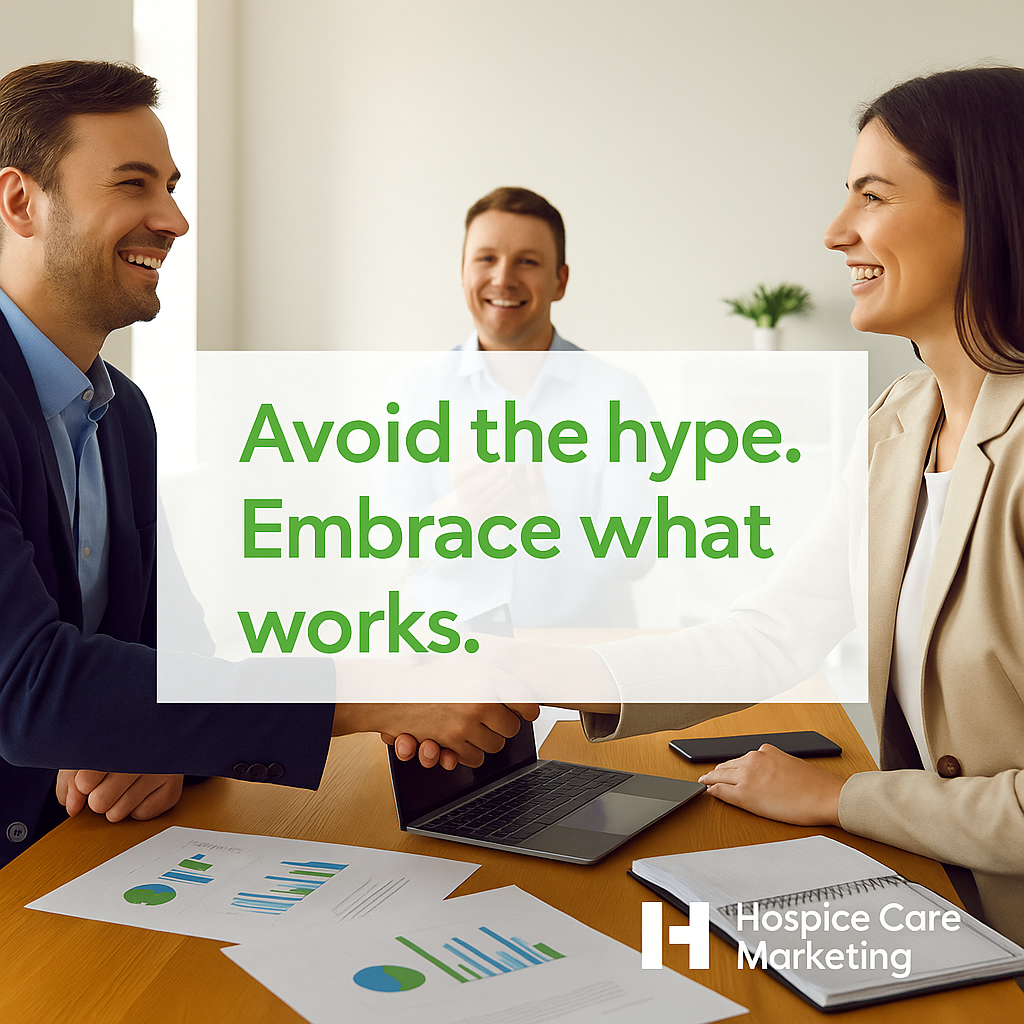Every day, families in your community are searching online for hospice care, often during one of the most difficult moments of their lives. If your agency isn’t showing up in those searches or doesn’t offer the clarity and reassurance they need, you could be missing out on opportunities to serve them.
In this post, we’ll break down how families search for hospice care online, why visibility matters, and what your agency can do to ensure you’re not invisible during their moment of need.

- Families Begin Their Search Online. When someone begins thinking about hospice care for a loved one, the first step is almost always Google. They search phrases like:
- “When is it time for hospice?”
- “Hospice care near me”
- “Best hospice providers in the United States”
If your agency isn’t ranking for these searches, someone else is. And that means another provider is getting the call.
- Visibility Starts with Local SEO. Google prioritizes local results for search terms like “hospice care near me.” That’s why your agency must be optimized for your city, county, and surrounding service area.
Key steps include:- Optimizing your Google Business Profile
- Ensuring consistent name, address, and phone number across directories
- Using location-specific keywords on your website and blog
These elements help Google understand who you serve and when to show your agency in search results.
- Your Website Needs to Build Trust Quickly. Once a family lands on your site, they need more than facts, they need guidance, reassurance, and proof that they’re in good hands.
A trust-building hospice website should:- Use warm, compassionate language
- Be easy to navigate and mobile-friendly
- Clearly explain services and when to call
- Highlight testimonials and reviews from families
If your website is outdated, cluttered, or hard to understand, families may click away without reaching out.
- Google Ads Can Capture Immediate Opportunities. If your SEO efforts aren’t yet delivering top rankings, Google Ads can ensure your agency still shows up. Ads allow you to appear at the top of search results for high-intent phrases like “hospice care near me.”
- You only pay when someone clicks
- Ads appear instantly in priority positions
- Great for competitive markets or urgent family searches
- Don’t Forget Retargeting. Many families visit your site and leave before taking action. Retargeting helps you stay in front of those visitors as they continue to research. This keeps your agency top-of-mind without being aggressive.
- Shows your ads across websites and apps
- Builds familiarity and trust
- Brings visitors back when they’re ready to reach out
How Hospice Care Marketing Can Help
We help hospice providers get found online by the right families at the right time. Our full-service digital strategy includes:
- SEO and content that improves search rankings
- Google Ads that generate immediate leads
- Review management to build credibility
- Retargeting to re-engage interested families
- Custom websites that turn visitors into calls
Is Your Hospice Being Found by Families Who Need You?
If not, we can help you fix that. Let’s make sure your care is visible, trusted, and accessible.
Call (877) 959-5849 or schedule a free consultation today.




